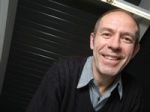Hidden among the squelch and whine of the little used shortwave radio band, mysterious stations broadcast unbreakable code.
Yosemite
Sam threatens to blow the listener to smithereens before switching to a
different frequency. An upbeat woman delivers nonsensical strings of
numbers in Mandarin. A repeating broadcast of a nursery rhyme breaks
only for a child to read numbers in German.
These
are the numbers stations—a radio station on shortwave that broadcasts
some sort of repetitive noise followed by strings of numbers. Amateur
tech geeks first identified the stations after World War II. No one is
sure what their purpose is.
That
hasn’t stopped anyone from speculating. The most popular theory is that
the broadcasts are used to transmit coded messages to spies and the
military. Shortwave is easy to broadcast globally, hard to trace and
free of commercial traffic.
Spies or military personnel tune into the frequency at an appointed time and use a one-time pad
to decrypt the message. The spy then destroys the pad and goes about
their mission. Anyone else listening hears a random string of numbers
with no context.
Listening
to numbers stations was once the hobby of a small margin of the
population. Only those with shortwave radios and patience to tune them
reaped the benefits of the strange broadcasts.
Now—thanks to the Internet—anyone can listen.
The University of Twente in the Netherlands maintains web-based shortwave radio anyone can access here. The interface is simple. Just input the frequency you want in the box below the graphic.
To get an idea of what frequencies to check out, head over to Priyom.org—an
international group researching intelligence and military
communications via shortwave radio. The site maintains a schedule of
active shortwave stations and catalogs interesting activity.
From War is Boring
Also from Lifehacker: How to Listen to Real Spy Broadcasts Right Now














